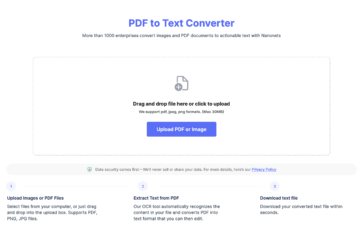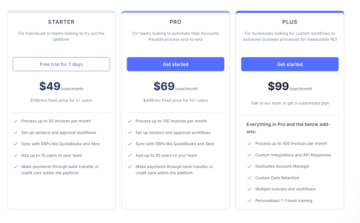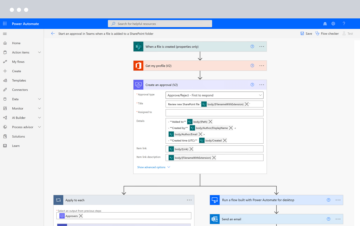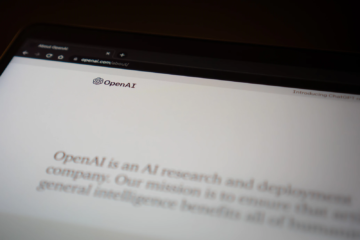
Beware of little expenses. A small leak will sink a great ship.
– Benjamin Franklin
The strategic management of expenses is vital to the financial success of companies. However, achieving sustainable spending management can be challenging due to various internal and external factors. Internal factors include rising operational costs, the need for omnichannel capabilities, high employee turnover, intense competition, and outdated processes. External factors include global crises like COVID, economic downturns such as the 2007-08 financial crisis, inflation, and political instability like the Russia-Ukraine conflict.
To overcome these obstacles, businesses require a comprehensive expense-reduction strategy that targets different areas of operation, such as defects, inefficiencies, excess capacity, idle time, and overproduction. Cost reduction opportunities exist throughout the economic cycle, from early stages to the phaseout period.
Understanding Sustainable Cost Reduction
In a McKinsey Quarterly survey, it was found that 79 percent of companies implemented cost-cutting measures in response to the global economic crisis of 2008-09. However, only 53 percent of executives believed that these cost reductions had effectively helped their companies weather the storm.
Sustainability is often an elusive goal in the realm of cost-cutting. While most cost-cutting initiatives may provide temporary financial relief, they only postpone the inevitable and hinder a business’s ability to compete in an evolving market. In a volatile macroeconomic environment, businesses often adopt aggressive cost-reduction measures to mitigate financial risks. This was evident during the 2008-2009 financial crisis, as shown in McKinsey’s survey above.
Sustainable cost reduction strategies must recognize the unique needs of each market and company, not to mention the economic climate of the country and the world. There is no one-size-fits-all solution to address cost-related challenges. Identifying the major cost drivers and accurately quantifying their impact is a complex undertaking. The speed and ease of implementing changes may remain uncertain, and the identification and elimination of waste present further challenges.
The long-term benefits of sustainable cost reduction over short-term fixes
Prioritizing long-term strategies and avoiding quick fixes in cost reduction brings several benefits to businesses. By embracing sustainable approaches, companies can position themselves for lasting success and resilience in a dynamic marketplace. Here are some key advantages of sustainable cost-cutting:
- Building Financial Resilience: Strategies that prioritize efficiency improvements, process optimization, and waste elimination can build financial resilience. By targeting these areas, businesses can enhance overall productivity, streamline operations, and gain a competitive edge. This approach allows companies to adapt and thrive across financial fluctuations generated locally or globally.
- Enhanced Profitability: Instead of solely focusing on expense reductions, sustainable approaches emphasize maximizing value creation and optimizing resource allocation. By identifying and eliminating waste, improving operational efficiency, and investing in innovation, businesses can generate higher returns and unlock new revenue streams.
- Operational Efficiency and Agility: Through the implementation of management techniques such as lean methodologies, automation, and continuous improvement practices, businesses achieve greater agility, adaptability, and responsiveness to market changes.
- Employee Morale and Retention: By avoiding short-term fixes that result in layoffs or excessive workload, companies can maintain higher employee morale, motivation, and loyalty. This creates a positive work environment, increases productivity, and reduces turnover. Long-term employee retention not only saves recruitment and training costs but also nurtures institutional knowledge and expertise, which are invaluable for sustained growth and innovation.
- Customer Satisfaction and Retention: By focusing on value creation and customer-centric practices, businesses can enhance customer satisfaction and increase customer retention. Satisfied customers are more likely to become loyal brand advocates and generate positive word-of-mouth, contributing to long-term business growth and profitability. It must be remembered that selling to an existing customer has a success rate of 60-70%, whereas selling to a new customer has a significantly lower success rate of 5-20%.
- Environmental Responsibility: By optimizing processes, reducing waste, and adopting eco-friendly practices, businesses can minimize their carbon footprint and contribute to environmental conservation. This not only demonstrates corporate social responsibility but can also attract environmentally conscious customers and partners.
Six Steps to Achieving Sustainable Cost Reductions
A significant number of cost initiatives fail due to their overly ambitious nature, lack of a clear strategy, and insufficient leadership buy-in. Gartner reports that approximately 43% of cost-cutting initiatives do not achieve their intended objectives.
There are six cost-saving approaches, namely adaptation, combination, elimination, optimization, substitution, and repurposing, each utilizing various methods to help organizations reduce costs significantly. However, to derive benefits from each or all the approaches adopted, the following steps are necessary.
- Establish cost reduction goals and objectives: It is essential to establish clear and measurable goals and targets that align with the organization’s financial objectives. By incorporating Key Performance Indicators (KPIs) into the process, organizations gain better clarity on the goals and objectives of their cost-reduction efforts. However, it is important to consider the potential slippage of up to 20% in plan execution when setting targets for more accurate goal setting. According to Gartner, less than half (43%) of leaders actually achieve their intended level of savings in the first year of cost reduction, primarily due to unrealistic targets.
- Identify cost drivers and prioritize areas for improvement: Rapid value creation diagnostics play a crucial role in identifying the cost drivers in the enterprise. This diagnostic process provides a structured framework for evaluating costs alongside factors like pricing, working capital, capital allocation, tax optimization, and environmental, social, and governance (ESG) considerations. By utilizing the insights from the value creation diagnostic, businesses can make informed choices to optimize their resources and enhance overall performance.
- Analyze current processes and identify inefficiencies: The main objective is to evaluate current business processes and workflows, aiming to identify inefficiencies and waste, such as excessive manual work, redundant tasks, bottlenecks, and unnecessary complexity. Management techniques such as Lean Sigma Programs can avoid wasteful activities and inefficiencies. For example, by implementing the Lean Six Sigma program, GE successfully eliminated inefficiencies, resulting in a substantial cost saving of $2 billion in 2008.
- Develop and implement cost-reduction initiatives: There are numerous initiatives and processes designed to increase operational efficiencies and reduce costs, and one powerful approach that can deliver these benefits is design thinking. By adopting design thinking principles, organizations can not only uncover cost-cutting opportunities but also enhance speed and design better solutions. Through its human-centered and iterative problem-solving approach, design thinking helps identify and eliminate inefficiencies, streamline processes, and drive innovation, ultimately leading to cost reductions. For instance, a survey conducted by Forrester showcased how the implementation of design thinking, combined with strategic prioritization, resulted in a remarkable increase of $18.6 million in profits over a three-year period to companies.
- Monitor and measure progress towards cost reduction goals: What gets measured gets done. It is crucial to recognize that cost reduction is an ongoing process that requires continuous improvement. KPIs should be reviewed periodically, whether on a monthly, quarterly, or other predefined reporting frequency. Monitoring allows for a clear understanding of performance trends, identifying areas of underperformance or overperformance, and determining the factors that contribute to these changes. It is prudent to prepare for the unexpected by setting higher cost reduction targets as a buffer against potential setbacks.
- Engage employees and foster a cost-conscious culture: Employees in organizations often prioritize actions aligned with profit maximization, but conflicts may arise with their personal values. Bridging this gap requires integrating sustainable cost reductions into job descriptions, training, and compensation (formal dimension), rewarding cost-cutting efforts while aligning them with expectations (psychological dimension), and ensuring consistency between company values and practices (social dimension).According to Gallup’s meta-analysis, business units with the highest employee engagement scores showed a 21 percent increase in profitability compared to those with the lowest scores. Additionally, companies with highly engaged workforces scored 17 percent higher in productivity. Another long-term study showed that companies with strong corporate cultures and a focus on employee appreciation achieved an impressive revenue growth of 68.2 percent.
Strategies for cost reduction
To achieve effective cost reduction, businesses can employ a range of strategies. Emphasizing strategic thinking and long-term value creation is crucial. Managing non-core activities and considering outsourcing options where appropriate can lead to significant cost savings. Conducting rigorous cost-benefit analyses before implementing cost-reduction measures ensures informed decision-making and maximizes the effectiveness of cost-saving efforts.
Promoting cross-functional collaboration and leveraging collective intelligence can also contribute to cost reduction. By encouraging collaboration between different departments and leveraging the diverse expertise within the organization, businesses can identify innovative cost-saving opportunities. Balancing cost reduction with customer value and maintaining quality standards is vital to ensure customer satisfaction and retention.
Streamlining inventory management and optimizing stock levels helps minimize holding costs and avoid unnecessary inventory expenses. Negotiating better vendor contracts and exploring alternative suppliers can result in favorable pricing terms and improved cost efficiencies. Implementing energy-saving initiatives and reducing utility expenses not only supports cost-reduction efforts but also aligns with environmental sustainability goals.
Maximizing employee productivity and improving labor scheduling can lead to increased efficiency and reduced labor costs. Lastly, strategic use of technology such as automation and digitalization can streamline processes and eliminate manual tasks, and lead to cost-performance benefits.
The use of technology in sustainable cost-cutting
In today’s fast-paced business environment, the utilization of technological tools has become indispensable for businesses to maintain competitiveness and achieve success. By leveraging technology, businesses can enhance their operations, improve efficiency, and ultimately drive cost reduction.
At a basic level, digital tools can facilitate more efficient and easier communication within businesses. Collaborative tools, instant messaging platforms, and video conferencing solutions enable seamless communication and information sharing across teams and departments. This eliminates delays, improves coordination, and enhances overall productivity.
Digital tools contribute to streamlining inventories through automation and data-driven insights. Inventory management software and systems provide real-time visibility into stock levels, demand patterns, and supplier information. This enables businesses to optimize inventory levels, reduce carrying costs, minimize stockouts, and improve overall supply chain efficiency.
Technology empowers businesses to maximize productivity by automating repetitive and time-consuming manual tasks. Robotic Process Automation (RPA) and workflow management tools automate manual processes such as data entry, document processing, and invoice management. This frees up employees’ time, allowing them to focus on more value-added activities, innovation, and strategic decision-making.
Artificial Intelligence (AI) and Machine Learning (ML) can analyze large datasets, identify patterns, and provide predictive insights. This enables businesses to anticipate demand, optimize resource allocation, and make data-driven decisions that result in cost savings and operational efficiencies.
Cloud-based expense management platforms offer scalability, flexibility, and accessibility, allowing businesses to manage expenses seamlessly across locations and departments. Mobile apps empower employees to capture receipts, submit expense claims, and track reimbursements on-the-go, enhancing convenience and compliance.
Over a five-year period, IBM saved approximately $6 billion through its technology-driven cost optimization efforts. The company achieved these savings by rationalizing its IT infrastructure, consolidating data centers, and automating manual processes.
The successful use of technology entails the use of various technologies, such as IoT, AI, blockchain, 5G, and edge computing, which help businesses optimize processes, cut costs, and enhance efficiency.
Digital tools like Nanonets can help businesses gain complete control over their expenses by leveraging its AI-based data extraction platform. With the ability to automatically sync invoices and payment information from various sources, such as emails, PDFs, and scanned documents, Nanonets eliminates the need for manual data entry. This ensures businesses can quickly extract key information, identify discrepancies, and prevent wasteful spending. Nanonets also offers approval workflows, duplicate alerts, and fraud detection tools to enhance data accuracy and eliminate incorrect spends. Furthermore, the platform facilitates efficient payment and reconciliation processes, ensuring accurate and timely transactions. By leveraging digital tools like Nanonets, businesses can streamline expense management, achieve cost savings of at least 5%, and maintain financial control.
Takeaway
A sustainable approach to cutting business expenses involves a multifaceted strategy that encompasses various key elements. By harnessing market insights, businesses can make informed and data-driven decisions that align with their financial objectives. Fostering open and effective communication with internal stakeholders ensures that cost-saving measures are implemented seamlessly throughout the organization. Meticulous supplier and inventory management play a vital role in optimizing procurement processes, reducing waste, and controlling expenses. Agility is essential for organizations on the digital transformation journey to thrive in a rapidly changing business landscape. Delivering on organizational expectations with a robust digital mindset and innovative approaches is crucial for success in today’s environment Lastly, enforcing comprehensive controls and governance measures establishes a strong foundation for financial accountability and risk management.
When these elements are combined, businesses can achieve significant cost reductions while maintaining operational stability, ultimately paving the way for long-term financial sustainability and success.
- SEO Powered Content & PR Distribution. Get Amplified Today.
- PlatoAiStream. Web3 Data Intelligence. Knowledge Amplified. Access Here.
- Minting the Future w Adryenn Ashley. Access Here.
- Buy and Sell Shares in PRE-IPO Companies with PREIPO®. Access Here.
- Source: https://nanonets.com/blog/how-to-cut-business-expenses-in-a-meaningful-and-sustainable-way/
- :has
- :is
- :not
- :where
- $UP
- 17
- 5G
- a
- ability
- above
- accessibility
- According
- accountability
- accuracy
- accurate
- accurately
- Achieve
- achieved
- achieving
- across
- actions
- activities
- actually
- adapt
- adaptation
- Additionally
- address
- adopt
- adopted
- Adopting
- advantages
- advocates
- against
- aggressive
- AI
- Aiming
- Alerts
- align
- aligned
- Aligns
- All
- allocation
- Allowing
- allows
- alongside
- also
- alternative
- ambitious
- an
- analyze
- and
- Another
- anticipate
- appreciation
- approach
- approaches
- appropriate
- approval
- approximately
- apps
- ARE
- areas
- AS
- At
- attract
- automate
- automatically
- automating
- Automation
- avoid
- avoiding
- balancing
- basic
- BE
- become
- before
- believed
- benefits
- Benjamin
- Better
- between
- Billion
- blockchain
- Blog
- bottlenecks
- brand
- bridging
- Brings
- buffer
- build
- business
- business processes
- businesses
- but
- by
- CAN
- capabilities
- Capacity
- capital
- capture
- carbon
- carbon footprint
- carrying
- Centers
- chain
- challenges
- challenging
- Changes
- changing
- choices
- claims
- clarity
- clear
- Climate
- collaboration
- collaborative
- Collective
- COM
- combination
- combined
- Communication
- Companies
- company
- compared
- Compensation
- compete
- competition
- competitive
- competitiveness
- complete
- complex
- complexity
- compliance
- comprehensive
- computing
- conducted
- conducting
- conferencing
- conflict
- conscious
- CONSERVATION
- Consider
- considerations
- considering
- consolidating
- continuous
- contracts
- contribute
- contributing
- control
- controlling
- controls
- convenience
- coordination
- Corporate
- Corporate Social Responsibility
- Cost
- cost reduction
- cost savings
- Costs
- country
- Covid
- creates
- creation
- crisis
- crucial
- Culture
- Current
- customer
- Customer Retention
- Customer satisfaction
- Customers
- Cut
- cut costs
- cutting
- cycle
- data
- data centers
- data entry
- data-driven
- datasets
- Decision Making
- decisions
- delays
- deliver
- delivering
- Demand
- demonstrates
- departments
- Design
- design thinking
- designed
- Detection
- determining
- different
- digital
- Digital Transformation
- digitalization
- Dimension
- diverse
- do
- document
- documents
- done
- downturns
- drive
- drivers
- due
- during
- dynamic
- each
- Early
- ease
- easier
- Eco-friendly
- Economic
- economic crisis
- Edge
- edge computing
- Effective
- effectively
- effectiveness
- efficiencies
- efficiency
- efficient
- efforts
- elements
- eliminate
- eliminated
- eliminates
- eliminating
- emails
- embracing
- emphasize
- emphasizing
- Employee
- employees
- empower
- empowers
- enable
- enables
- encompasses
- encouraging
- enforcing
- engaged
- engagement
- enhance
- Enhances
- enhancing
- ensure
- ensures
- ensuring
- Enterprise
- entry
- Environment
- environmental
- Environmental Sustainability
- environmentally
- ESG
- essential
- establish
- establishes
- evaluate
- evaluating
- evident
- evolving
- example
- excess
- execution
- executives
- exist
- existing
- expectations
- expense
- expenses
- expertise
- Exploring
- external
- extract
- extraction
- facilitate
- facilitates
- factors
- FAIL
- fast-paced
- financial
- financial accountability
- financial crisis
- financial resilience
- financial success
- First
- Flexibility
- fluctuations
- Focus
- focusing
- following
- Footprint
- For
- Forbes
- formal
- Forrester
- Foster
- fostering
- found
- Foundation
- Framework
- fraud
- fraud detection
- Frequency
- from
- further
- Furthermore
- Gain
- gap
- Gartner
- ge
- generate
- generated
- Global
- Global Economic
- Globally
- goal
- Goals
- governance
- great
- greater
- Growth
- had
- Half
- Harnessing
- help
- helped
- helps
- here
- High
- higher
- highest
- highly
- hinder
- holding
- How
- How To
- However
- HTTPS
- IBM
- Identification
- identify
- identifying
- Idle
- Impact
- implement
- implementation
- implemented
- implementing
- important
- impressive
- improve
- improved
- improvement
- improvements
- improves
- improving
- in
- include
- incorporating
- Increase
- increased
- Increases
- Indicators
- inevitable
- inflation
- information
- informed
- Infrastructure
- initiatives
- Innovation
- innovative
- insights
- instability
- instance
- instant
- Instant Messaging
- instead
- Institutional
- Integrating
- Intelligence
- intended
- internal
- into
- invaluable
- inventory
- Inventory Management
- investing
- Invoice Management
- involves
- iot
- IT
- ITS
- Job
- journey
- jpg
- Key
- knowledge
- labor
- Lack
- landscape
- large
- lasting
- layoffs
- lead
- leaders
- Leadership
- leading
- leak
- learning
- least
- less
- Level
- levels
- leveraging
- like
- likely
- little
- locally
- locations
- long-term
- long-term benefits
- lowest
- loyal
- Loyalty
- machine
- machine learning
- Macroeconomic
- Main
- maintain
- major
- make
- manage
- management
- Management Tools
- managing
- manual
- manual work
- Market
- market insights
- marketplace
- Maximize
- maximizes
- maximizing
- May..
- McKinsey
- meaningful
- measure
- measures
- messaging
- methodologies
- methods
- million
- Mindset
- minimize
- Mitigate
- ML
- Mobile
- mobile-apps
- monitoring
- monthly
- more
- more efficient
- most
- Motivation
- multifaceted
- must
- namely
- Nature
- necessary
- Need
- needs
- New
- no
- number
- numerous
- objective
- objectives
- obstacles
- of
- offer
- Offers
- often
- omnichannel
- on
- ONE
- ongoing
- only
- open
- operation
- operational
- Operations
- opportunities
- optimization
- Optimize
- optimizing
- Options
- or
- organization
- organizational
- organizations
- Other
- Outsourcing
- over
- overall
- Overcome
- partners
- patterns
- Paving
- payment
- percent
- performance
- period
- personal
- plan
- platform
- Platforms
- plato
- Plato Data Intelligence
- PlatoData
- Play
- political
- position
- positive
- potential
- powerful
- practices
- Prepare
- present
- prevent
- pricing
- primarily
- principles
- prioritization
- Prioritize
- problem-solving
- process
- Process Automation
- processes
- processing
- productivity
- Profit
- profitability
- profits
- Program
- Programs
- Progress
- provide
- provides
- quality
- Quick
- quickly
- range
- rapid
- rapidly
- Rate
- real-time
- realm
- receipts
- recognize
- reconciliation
- recruitment
- reduce
- Reduced
- reduces
- reducing
- reduction
- relief
- remain
- remarkable
- repetitive
- Reporting
- require
- requires
- resilience
- resource
- Resources
- response
- responsibility
- result
- resulting
- retention
- returns
- revenue
- revenue growth
- reviewed
- rewarding
- rigorous
- rising
- Risk
- risk management
- risks
- Robotic
- Robotic Process Automation
- robust
- Role
- rpa
- s
- satisfaction
- satisfied
- saving
- Savings
- Scalability
- scheduling
- seamless
- seamlessly
- Selling
- Setbacks
- setting
- several
- sharing
- short-term
- should
- showed
- shown
- Sigma
- significant
- significantly
- SIX
- slippage
- small
- Social
- Software
- solely
- solution
- Solutions
- some
- Sources
- speed
- Spending
- Stability
- stages
- stakeholders
- standards
- Steps
- stock
- Storm
- Strategic
- strategies
- Strategy
- streamline
- streamlining
- streams
- strong
- structured
- submit
- substantial
- success
- successful
- Successfully
- such
- suppliers
- supply
- supply chain
- Supports
- Survey
- Sustainability
- sustainable
- sustained
- Systems
- targeting
- targets
- tasks
- tax
- teams
- techniques
- technological
- Technologies
- Technology
- temporary
- terms
- than
- that
- The
- the world
- their
- Them
- themselves
- There.
- These
- they
- Thinking
- this
- those
- Thrive
- Through
- throughout
- time
- time-consuming
- to
- today
- tools
- towards
- track
- Training
- Transactions
- Transformation
- Trends
- turnover
- Ultimately
- Uncertain
- uncover
- understanding
- Unexpected
- unique
- units
- unlock
- use
- utility
- Utilizing
- value
- value creation
- Values
- various
- vendor
- Video
- video conferencing
- visibility
- vital
- volatile
- was
- Waste
- Way..
- Weather
- What
- when
- whether
- which
- while
- will
- with
- within
- Work
- workflow
- workflows
- working
- world
- year
- zephyrnet












